This past weekend, I happened to pull up behind a pickup truck at a traffic light and I could not help but notice something about the license plate that impressed me.
First off, there was a bumper sticker that said “Stress is caused by a lack of fishing” and there were several years’ worth of ramp passes stuck one on top of each other, but what impressed me most was the license plate.
It was an older Maryland plate and it looked like it had been attacked by a gorilla with a 5-pound ball peen hammer. That relayed to me that this guy had spent a lot of time hooking up a boat trailer by himself and the trailer tongue hit the license plate now and then signaling “far enough.” The plate showed years of this and that this guy spends a lot of time fishing out of his boat.
As he pulled away, I gave him a mental salute. Here was a guy who knows how to handle stress.
First off, there was a bumper sticker that said “Stress is caused by a lack of fishing” and there were several years’ worth of ramp passes stuck one on top of each other, but what impressed me most was the license plate.
It was an older Maryland plate and it looked like it had been attacked by a gorilla with a 5-pound ball peen hammer. That relayed to me that this guy had spent a lot of time hooking up a boat trailer by himself and the trailer tongue hit the license plate now and then signaling “far enough.” The plate showed years of this and that this guy spends a lot of time fishing out of his boat.
As he pulled away, I gave him a mental salute. Here was a guy who knows how to handle stress.
Forecast Summary: Aug. 22-28
After some unsettled weather Wednesday and Thursday, anglers will finally get to experience stable, sunny weather for the rest of the week. This will warm Chesapeake Bay surface waters and move the pattern back toward fishing shallow early and then fishing in the deeper, cooler, more oxygenated waters.
Upper bay water clarity is still reduced from the high river flows. According to the National Oceanic and Atmospheric Administration buoys, daytime water temperatures have cooled slightly, with Annapolis at 80, Gooses at 81 and Point Lookout at 81 degrees, but expect surface temperatures to rise throughout the week. The coolest waters continue to be located from the Susquehanna Flats down to Still Pond.
Since the record oxygen conditions in late July, oxygen conditions have returned back toward typical conditions. Monitoring data show adequate oxygen from surface down to about 23 feet at Swan Point down to the Bay Bridge, 15 feet at Bloody Point, and from the mouth of the Choptank down to the Maryland/Virginia line, over 30 feet. For anglers, continue to seek the best combination of clear, cool, oxygenated waters. This means fishing deeper or early in the morning in shallow waters when surface water temperatures can be ~3 degrees cooler.
There will be above average tidal currents all week as a result of the full moon Aug. 26.
For the full fishing conditions summary, and more detailed and up-to-date fishing conditions in your area, please be sure to check out Click Before You Cast.
Upper bay water clarity is still reduced from the high river flows. According to the National Oceanic and Atmospheric Administration buoys, daytime water temperatures have cooled slightly, with Annapolis at 80, Gooses at 81 and Point Lookout at 81 degrees, but expect surface temperatures to rise throughout the week. The coolest waters continue to be located from the Susquehanna Flats down to Still Pond.
Since the record oxygen conditions in late July, oxygen conditions have returned back toward typical conditions. Monitoring data show adequate oxygen from surface down to about 23 feet at Swan Point down to the Bay Bridge, 15 feet at Bloody Point, and from the mouth of the Choptank down to the Maryland/Virginia line, over 30 feet. For anglers, continue to seek the best combination of clear, cool, oxygenated waters. This means fishing deeper or early in the morning in shallow waters when surface water temperatures can be ~3 degrees cooler.
There will be above average tidal currents all week as a result of the full moon Aug. 26.
For the full fishing conditions summary, and more detailed and up-to-date fishing conditions in your area, please be sure to check out Click Before You Cast.
Upper Chesapeake Bay
Fishing for striped bass has improved despite the increased amount of turbid water coming down the Susquehanna River from Pennsylvania. The striped bass have spread out along channel edges of several traditional locations. There has been relatively good fishing at the Bay Bridge, Swan, Love and Podickory points by those chumming, chunking or live lining spot. Those chumming and chunking are experiencing a large number of sub-legal striped bass and channel catfish in their chum slicks. Allowing baits to rest on the bottom at the back of a chum slick is a good tactic for targeting larger striped bass but also puts you bait in the sights of channel catfish that have moved down the bay due to reduced salinity.
Live lining spot has been a wonderful option for catching striped bass. Spot can be found near the mouths of the Magothy and Chester rivers as well as the shallower sides of the Bay Bridge, especially the western side. White perch are also holding at these same locations and worthy of holding on to for a little perch fry. Pieces of bloodworms on a simple bottom rig and a live well to transport your live spot to fishing locations are needed. When hooking your spot before sending them to the depths of a channel edge try a fairly large circle hook in the range of a 9/0 and hook the baitfish close to the tail. This will cause the spot to swim downward.
Jigging to suspended fish at the above locations is also a good way to get in on the striped bass action with soft plastic jigs. A few boats can be seen trolling here and there but the action has been reported to be rather sparse.
Fishing for striped bass has improved despite the increased amount of turbid water coming down the Susquehanna River from Pennsylvania. The striped bass have spread out along channel edges of several traditional locations. There has been relatively good fishing at the Bay Bridge, Swan, Love and Podickory points by those chumming, chunking or live lining spot. Those chumming and chunking are experiencing a large number of sub-legal striped bass and channel catfish in their chum slicks. Allowing baits to rest on the bottom at the back of a chum slick is a good tactic for targeting larger striped bass but also puts you bait in the sights of channel catfish that have moved down the bay due to reduced salinity.
Live lining spot has been a wonderful option for catching striped bass. Spot can be found near the mouths of the Magothy and Chester rivers as well as the shallower sides of the Bay Bridge, especially the western side. White perch are also holding at these same locations and worthy of holding on to for a little perch fry. Pieces of bloodworms on a simple bottom rig and a live well to transport your live spot to fishing locations are needed. When hooking your spot before sending them to the depths of a channel edge try a fairly large circle hook in the range of a 9/0 and hook the baitfish close to the tail. This will cause the spot to swim downward.
Jigging to suspended fish at the above locations is also a good way to get in on the striped bass action with soft plastic jigs. A few boats can be seen trolling here and there but the action has been reported to be rather sparse.
Middle Bay
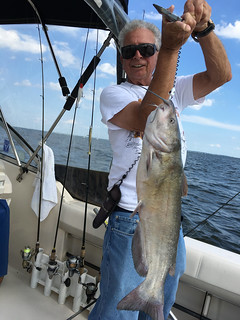
Live lining spot for striped bass tends to be the biggest show in town. The spot are readily available and striped bass are holding on channel edges at many locations. The outside edge of Hacketts Bar, Thomas Point, the False Channel and the Diamonds have been getting a lot of attention but channel edges in the mouths of the region’s tidal rivers and the Kent Narrows are also good places to check for live lining spot. Spot can be found in about 10 to 15 feet of water on the Whitehall Bay side of Hacketts, Eastern Bay, the South River and the inside of Black Walnut Point on Tilghman Island in the lower Choptank.
There continues to be some early morning and late evening shallow water striped bass action in the lower sections of the tidal rivers. Topwater lures do well over shallow grass and jerkbaits or crankbaitsin slightly deeper waters. Places in the bay like Thomas Point and Poplar Island are good places to give casting a try. There have also been reports of some breaking fish in the bay near the anchored ships in the evenings.
Fishing for white perch continues to be very good. Casting small lures with light tackle along shoreline structure can be a lot of fun in the early mornings and late evenings. Fishing with a bottom rig or small jig head baited with grass shrimp is a great way to catch them around dock piers.

Jay Bernstein holds up a big channel catfish caught at Thomas Point while fishing for striped bass. Photo courtesy of Jay Bernstein
Live lining spot for striped bass tends to be the biggest show in town. The spot are readily available and striped bass are holding on channel edges at many locations. The outside edge of Hacketts Bar, Thomas Point, the False Channel and the Diamonds have been getting a lot of attention but channel edges in the mouths of the region’s tidal rivers and the Kent Narrows are also good places to check for live lining spot. Spot can be found in about 10 to 15 feet of water on the Whitehall Bay side of Hacketts, Eastern Bay, the South River and the inside of Black Walnut Point on Tilghman Island in the lower Choptank.
There continues to be some early morning and late evening shallow water striped bass action in the lower sections of the tidal rivers. Topwater lures do well over shallow grass and jerkbaits or crankbaitsin slightly deeper waters. Places in the bay like Thomas Point and Poplar Island are good places to give casting a try. There have also been reports of some breaking fish in the bay near the anchored ships in the evenings.
Fishing for white perch continues to be very good. Casting small lures with light tackle along shoreline structure can be a lot of fun in the early mornings and late evenings. Fishing with a bottom rig or small jig head baited with grass shrimp is a great way to catch them around dock piers.
Lower Bay
Striped bass fishing has been focused largely on live lining spot since the spot are readily available in numerous locations. The rock piles just north of Point Lookout, channel edges at Point No Point and Cove Point or the channel edges near St. Georges Island. Most of the striped bass are suspended at about 25 feet at these locations. Bluefish are becoming more common in the region so it pays to have some extra spot. Sometimes what is left of your spot can be used as cut bait to seek some vengeance and some tasty fillets for the grill or a smoker.
Chumming and chunking continues to be an effective way to fish for a mix of striped bass and bluefish along traditional channel edges in the bay or lower Potomac River. A good running tide is always important and many are reporting that the early morning hours can offer some of the best fishing.
Vertical jigging has been an effective way to fish many of the channel edges in the lower Potomac River or the shipping channel edges. Jigging large soft plastics or metal can also set the stage for some exciting catch and release fishing for large red drum along the shipping channel edges and the general area around the Target Ship.
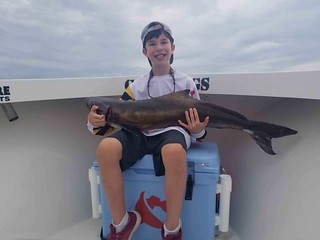
Trolling action has been good for a mix of striped bass and bluefish on red and green hoses and spoons. The best areas to troll have been along the channel edges in the lower Potomac and the edges of the shipping channel in the bay. The area around the Target Ship is a good place to give it a try and you may also bump into a cobia now and then. There are also some Spanish mackerel to be found when trolling small spoons along the shipping channel edges and the Tangier Sound area.
Bottom fishing for a mix of spot, croaker and white perch has been excellent in several locations in the lower Potomac and Patuxent rivers. The mouth of the Wicomico and St. Mary’s rivers have been good places to fish with bloodworms, wild shrimp or peeler crab. On the eastern side of the bay, the areas around Tangier and Pocomoke sounds are providing a wonderful mix of croaker, spot, small bluefish and white perch.
Recreational crabbers are reporting improved success in regards to the quality and quantity of blue crabs being caught in the bay. The lower and middle bay regions are producing some of the best catches for those using trot lines or collapsible crab traps. Catches range up from a full bushel per outing for the middle and lower bay regions to a half bushel or more in the upper bay.
Striped bass fishing has been focused largely on live lining spot since the spot are readily available in numerous locations. The rock piles just north of Point Lookout, channel edges at Point No Point and Cove Point or the channel edges near St. Georges Island. Most of the striped bass are suspended at about 25 feet at these locations. Bluefish are becoming more common in the region so it pays to have some extra spot. Sometimes what is left of your spot can be used as cut bait to seek some vengeance and some tasty fillets for the grill or a smoker.
Chumming and chunking continues to be an effective way to fish for a mix of striped bass and bluefish along traditional channel edges in the bay or lower Potomac River. A good running tide is always important and many are reporting that the early morning hours can offer some of the best fishing.
Vertical jigging has been an effective way to fish many of the channel edges in the lower Potomac River or the shipping channel edges. Jigging large soft plastics or metal can also set the stage for some exciting catch and release fishing for large red drum along the shipping channel edges and the general area around the Target Ship.

Nick Long holds up a surprise catch of a cobia while jigging with his dad near the Target Ship. Photo by Travis Long
Trolling action has been good for a mix of striped bass and bluefish on red and green hoses and spoons. The best areas to troll have been along the channel edges in the lower Potomac and the edges of the shipping channel in the bay. The area around the Target Ship is a good place to give it a try and you may also bump into a cobia now and then. There are also some Spanish mackerel to be found when trolling small spoons along the shipping channel edges and the Tangier Sound area.
Bottom fishing for a mix of spot, croaker and white perch has been excellent in several locations in the lower Potomac and Patuxent rivers. The mouth of the Wicomico and St. Mary’s rivers have been good places to fish with bloodworms, wild shrimp or peeler crab. On the eastern side of the bay, the areas around Tangier and Pocomoke sounds are providing a wonderful mix of croaker, spot, small bluefish and white perch.
Recreational crabbers are reporting improved success in regards to the quality and quantity of blue crabs being caught in the bay. The lower and middle bay regions are producing some of the best catches for those using trot lines or collapsible crab traps. Catches range up from a full bushel per outing for the middle and lower bay regions to a half bushel or more in the upper bay.
Freshwater Fishing
The scene at Deep Creek Lake is certainly settled into a summertime fishery. If one can get up early enough, there is a shallow water fishing for largemouth bass in the areas near shoreline structure and grass. Topwater lures are always a fun way to fish for largemouth bass and in slightly deeper waters; there is no more exciting way to catch smallmouth bass! Floating docks, floating grass and sunken wood are all good places to target as the morning progresses. Skipping soft plastics under or near docks or grubs and crankbaits near sunken wood are good tactics. Weedless rigged stick worms dropped through thick floating grass is another good tactic. Drifting along deep grass with minnows is a relaxing way to fish for a mix of smallmouth bass, yellow perch and walleye.
The upper Potomac is still running too high for safe boating or fishing. Targeting the smaller western region trout management waters would be a much better idea. They have healthy flows. It is not unusual for flows to be diminished this time of the year making it difficult for trout and anglers. The fly-fishing only and zero creel limit management areas offer a fulfilling experience during the summer months.
The many small ponds and larger reservoirs offer plenty of summertime fishing for a wide variety of species, ranging from bluegill sunfish to largemouth bass. Fishing for bluegills on a quiet summer morning or evening can be a lot of fun with a light fly rod and small rubber-leggedpoppers or foam ants. They are always a freshwater go to fish for the younger set and it is hard to beat a bobber set up.
Crappie are usually schooled up near deep structure. In tidal waters, marina docks and bridge piers are good places to look for them. Fishing with small jigs and or minnows down where they are holding is the ticket.
Largemouth bass are often a top target for most anglers and as long as one follows the summer mode of their behavior success is just a cast away. Shallow water at dawn and deeper shaded water during the day. Topwater lures or small lipless crankbaits in the shallows and stick worms, grubs and soft plastic jigs during the day near deep structure. Northern snakeheads will often be attracted to topwater lures when fishing for largemouth bass in tidal rivers and creeks. The lower Dorchester County area is quickly becoming heavily populated with them and providing some extra exciting action.
The scene at Deep Creek Lake is certainly settled into a summertime fishery. If one can get up early enough, there is a shallow water fishing for largemouth bass in the areas near shoreline structure and grass. Topwater lures are always a fun way to fish for largemouth bass and in slightly deeper waters; there is no more exciting way to catch smallmouth bass! Floating docks, floating grass and sunken wood are all good places to target as the morning progresses. Skipping soft plastics under or near docks or grubs and crankbaits near sunken wood are good tactics. Weedless rigged stick worms dropped through thick floating grass is another good tactic. Drifting along deep grass with minnows is a relaxing way to fish for a mix of smallmouth bass, yellow perch and walleye.
The upper Potomac is still running too high for safe boating or fishing. Targeting the smaller western region trout management waters would be a much better idea. They have healthy flows. It is not unusual for flows to be diminished this time of the year making it difficult for trout and anglers. The fly-fishing only and zero creel limit management areas offer a fulfilling experience during the summer months.
The many small ponds and larger reservoirs offer plenty of summertime fishing for a wide variety of species, ranging from bluegill sunfish to largemouth bass. Fishing for bluegills on a quiet summer morning or evening can be a lot of fun with a light fly rod and small rubber-leggedpoppers or foam ants. They are always a freshwater go to fish for the younger set and it is hard to beat a bobber set up.
Crappie are usually schooled up near deep structure. In tidal waters, marina docks and bridge piers are good places to look for them. Fishing with small jigs and or minnows down where they are holding is the ticket.
Largemouth bass are often a top target for most anglers and as long as one follows the summer mode of their behavior success is just a cast away. Shallow water at dawn and deeper shaded water during the day. Topwater lures or small lipless crankbaits in the shallows and stick worms, grubs and soft plastic jigs during the day near deep structure. Northern snakeheads will often be attracted to topwater lures when fishing for largemouth bass in tidal rivers and creeks. The lower Dorchester County area is quickly becoming heavily populated with them and providing some extra exciting action.
Atlantic Ocean and Coastal Bays
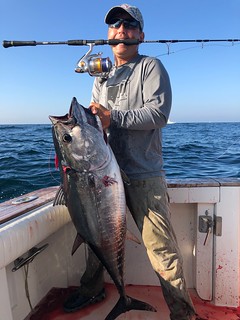
Surf casters are enjoying good fishing for kingfish along the Ocean City and Assateague Island beaches. This is some of the best fishing for kingfish we’ve seen this summer; bloodworms are one of the best baits to use. There are also a mix of croaker, spot, flounder, small bluefish and blowfish in the surf. Clams or squid have been working well for croaker, bloodworms for the spot, squid for the flounder and cut spot or mullet for the bluefish.
At the inlet, sheepshead are being caught on sand fleas and the south jetty has been the best place to catch them.
Flounder are in the inlet and Route 50 Bridge area and the largest ones are being caught on live spot, mullet or small menhaden. Casting white Gulp mullet baits on a jig head and working them as the current sweeps along has also been a good tactic for the larger flounder.
There is good trolling action for a mix of bluefish, Atlantic bonito, Spanish and king mackerel at some of the lumps inside the 30 Fathom curve. Trolling spoons behind inline weights has been a very popular tactic.
There has been a spotty Bluefin tuna bite at some of the offshore lumps along the 30 Fathom curve and out at the canyons. They are being caught by trolling, chunking and jigging. Some bigeye tuna are being caught along with small and large dolphin. White and blue marlin catches have also been good.
 ABOUT THE AUTHOR
ABOUT THE AUTHOR
Keith Lockwood has been writing the Fishing Report since 2003 and has had a long career as a fisheries research biologist since 1973. Over the course of his career he has studied estuarine fishery populations, ocean species, and over a decade long study of bioaccumulation of chemicals in aquatic species in New Jersey. Upon moving to Oxford on the eastern shore of Maryland; research endeavors focused on a variety of catch-and-release studies as well as other fisheries related research at the Cooperative Oxford Laboratory. Education and outreach to the fishing public has always been an important component to the mission of these studies. Keith is an avid outdoorsman enjoying hunting, fishing, bird dogs, family and life on the eastern shore of Maryland.

Bob Borhofen shows of a nice bluefin tuna and a mouthful of spinning rod that he caught while jigging deep with a butterfly jig. Photo by Julie Borhofen
Surf casters are enjoying good fishing for kingfish along the Ocean City and Assateague Island beaches. This is some of the best fishing for kingfish we’ve seen this summer; bloodworms are one of the best baits to use. There are also a mix of croaker, spot, flounder, small bluefish and blowfish in the surf. Clams or squid have been working well for croaker, bloodworms for the spot, squid for the flounder and cut spot or mullet for the bluefish.
At the inlet, sheepshead are being caught on sand fleas and the south jetty has been the best place to catch them.
Flounder are in the inlet and Route 50 Bridge area and the largest ones are being caught on live spot, mullet or small menhaden. Casting white Gulp mullet baits on a jig head and working them as the current sweeps along has also been a good tactic for the larger flounder.
There is good trolling action for a mix of bluefish, Atlantic bonito, Spanish and king mackerel at some of the lumps inside the 30 Fathom curve. Trolling spoons behind inline weights has been a very popular tactic.
There has been a spotty Bluefin tuna bite at some of the offshore lumps along the 30 Fathom curve and out at the canyons. They are being caught by trolling, chunking and jigging. Some bigeye tuna are being caught along with small and large dolphin. White and blue marlin catches have also been good.
“The most indispensable item in any fisherman’s equipment is his hat. This ancient relic, with its battered crown and well-frayed band, preserves not only the memory of every trout he caught, but also the smell.” – Corey Ford, 1952
 ABOUT THE AUTHOR
ABOUT THE AUTHORKeith Lockwood has been writing the Fishing Report since 2003 and has had a long career as a fisheries research biologist since 1973. Over the course of his career he has studied estuarine fishery populations, ocean species, and over a decade long study of bioaccumulation of chemicals in aquatic species in New Jersey. Upon moving to Oxford on the eastern shore of Maryland; research endeavors focused on a variety of catch-and-release studies as well as other fisheries related research at the Cooperative Oxford Laboratory. Education and outreach to the fishing public has always been an important component to the mission of these studies. Keith is an avid outdoorsman enjoying hunting, fishing, bird dogs, family and life on the eastern shore of Maryland.

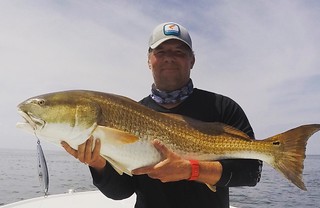
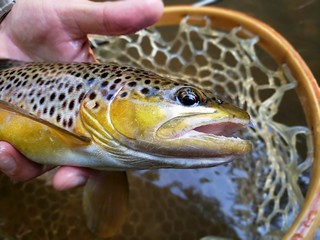
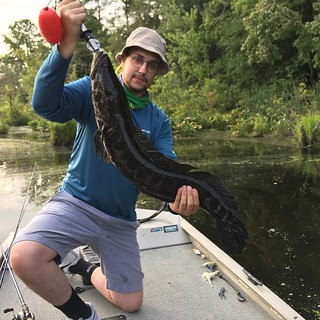
1 comment:
Thanks for posting this.
Post a Comment